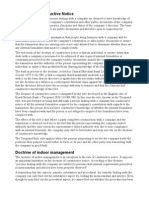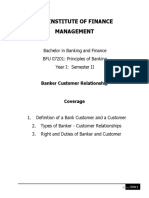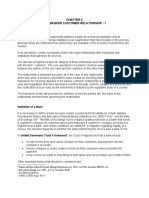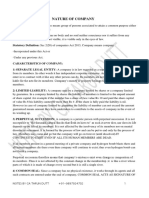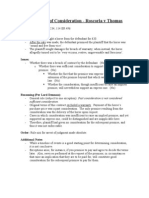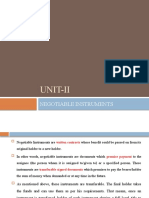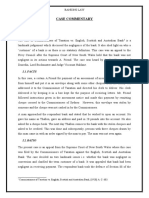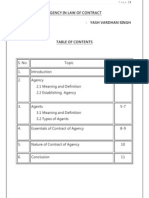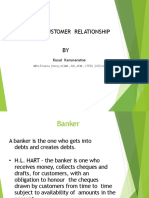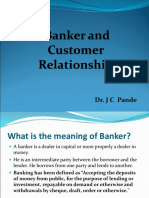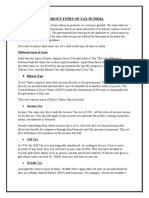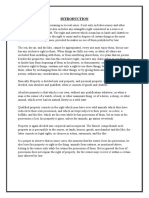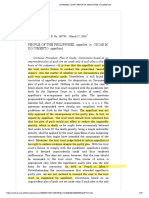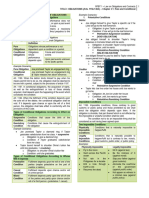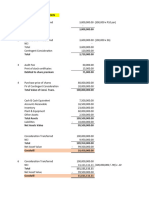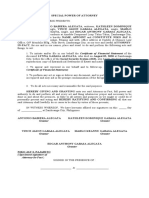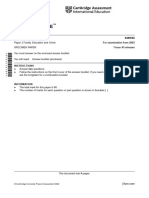0% found this document useful (0 votes)
176 views30 pagesBanker Customer Relationship
The document discusses the various types of relationships that can exist between a bank and its customers. It identifies general relationships like debtor-creditor that arise from basic banking services like deposits and loans. It also discusses special relationships like trustee, bailee-bailor, lessor-lessee, agent-principal, and custodian that occur in specific banking services and activities. The document outlines banker duties to customers like maintaining secrecy of accounts, paying checks with sufficient funds, and circumstances for closing accounts. It describes customers as consumers with rights under consumer protection laws.
Uploaded by
Utkarsh LodhiCopyright
© © All Rights Reserved
We take content rights seriously. If you suspect this is your content, claim it here.
Available Formats
Download as PPTX, PDF, TXT or read online on Scribd
0% found this document useful (0 votes)
176 views30 pagesBanker Customer Relationship
The document discusses the various types of relationships that can exist between a bank and its customers. It identifies general relationships like debtor-creditor that arise from basic banking services like deposits and loans. It also discusses special relationships like trustee, bailee-bailor, lessor-lessee, agent-principal, and custodian that occur in specific banking services and activities. The document outlines banker duties to customers like maintaining secrecy of accounts, paying checks with sufficient funds, and circumstances for closing accounts. It describes customers as consumers with rights under consumer protection laws.
Uploaded by
Utkarsh LodhiCopyright
© © All Rights Reserved
We take content rights seriously. If you suspect this is your content, claim it here.
Available Formats
Download as PPTX, PDF, TXT or read online on Scribd
/ 30




















